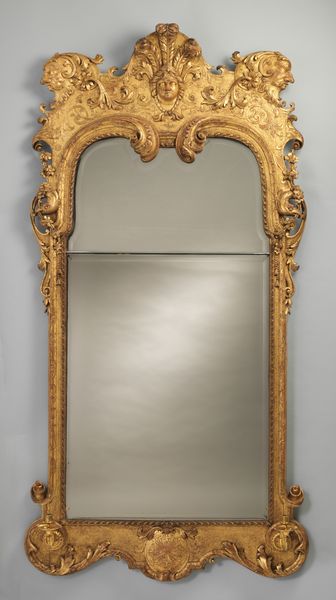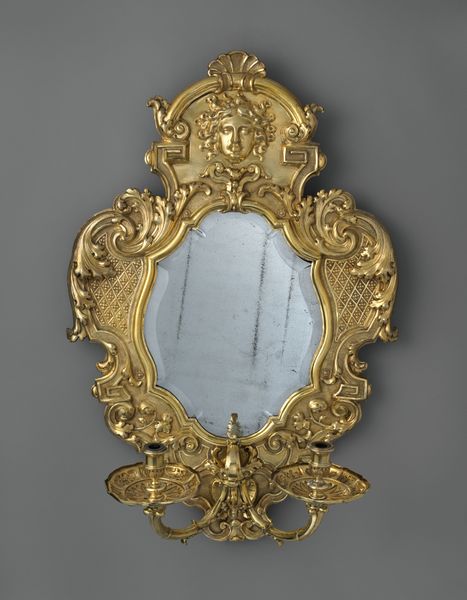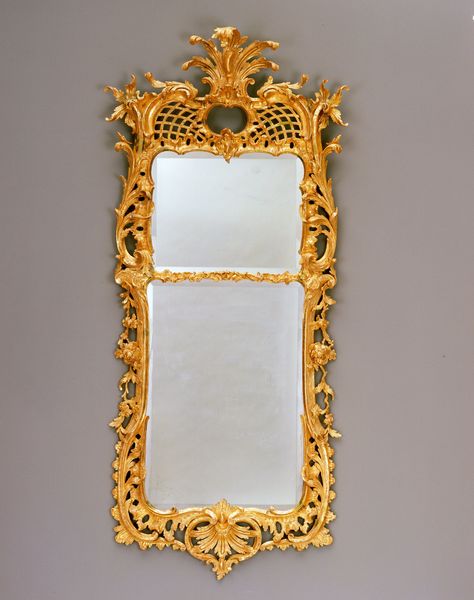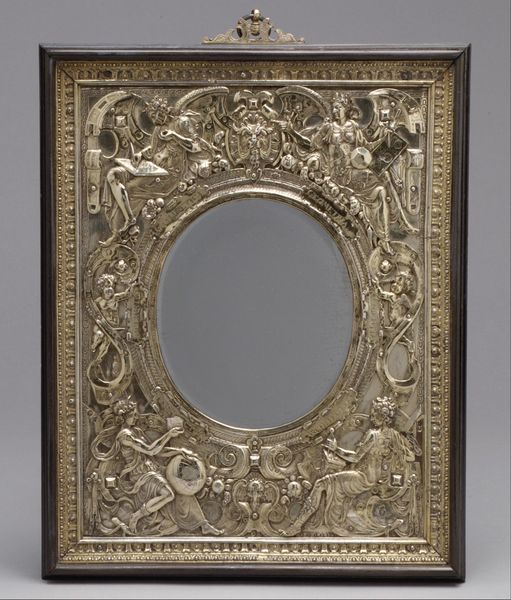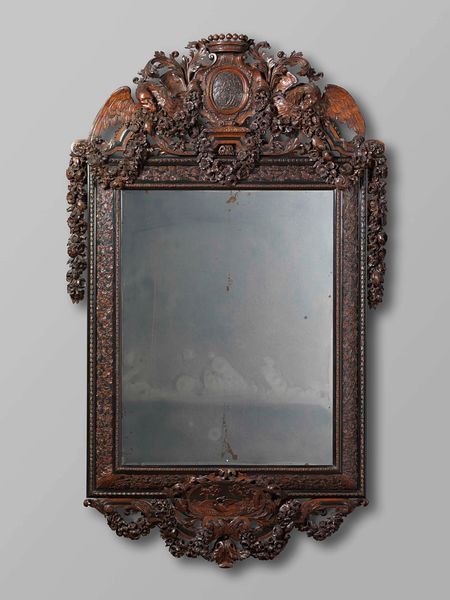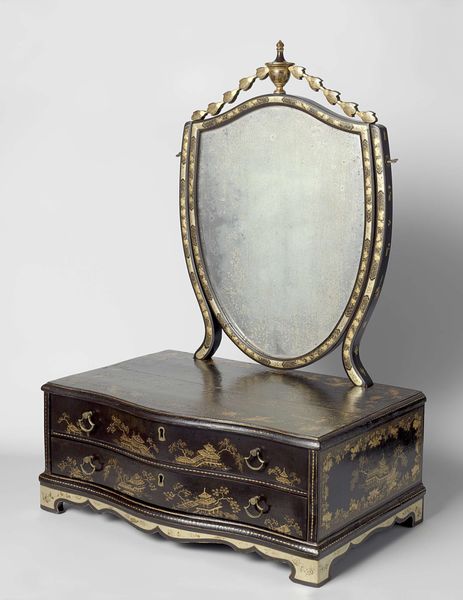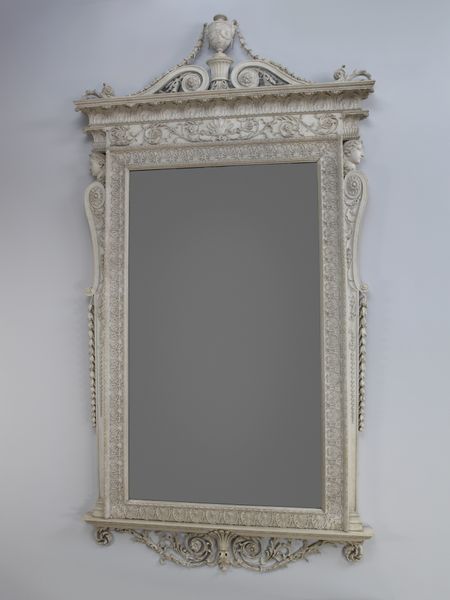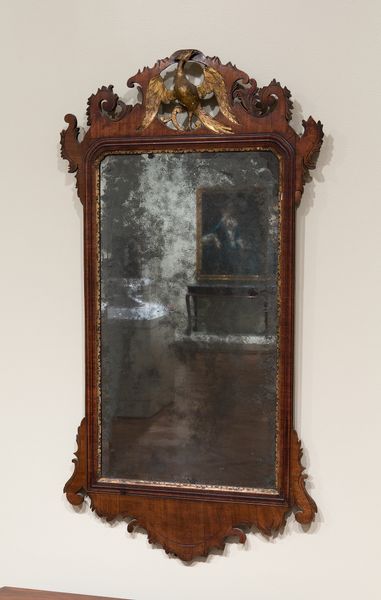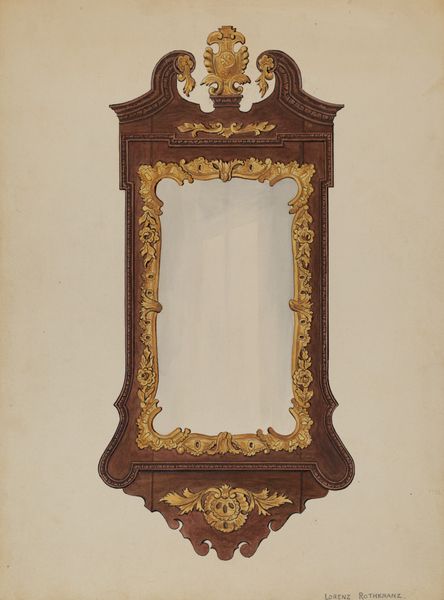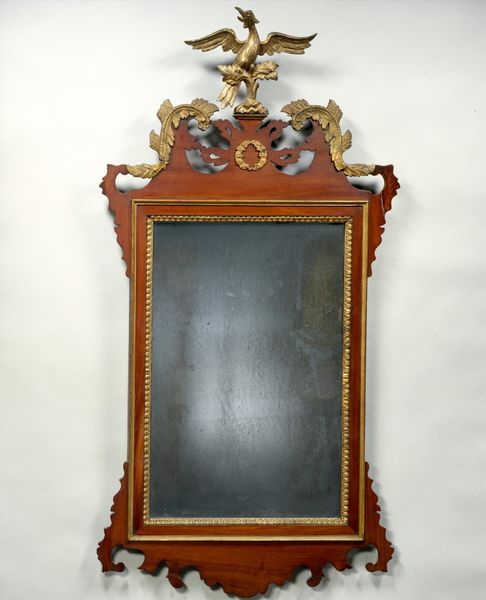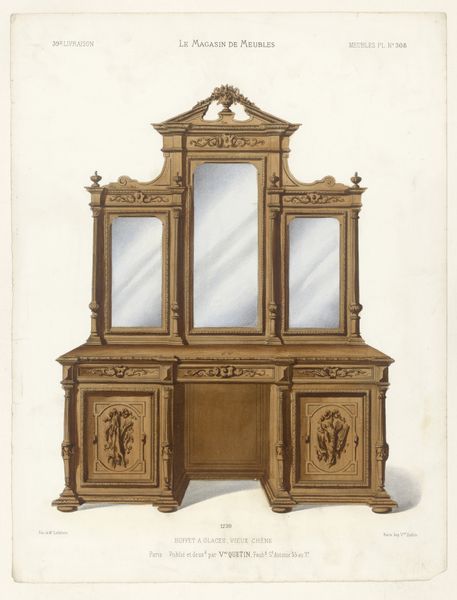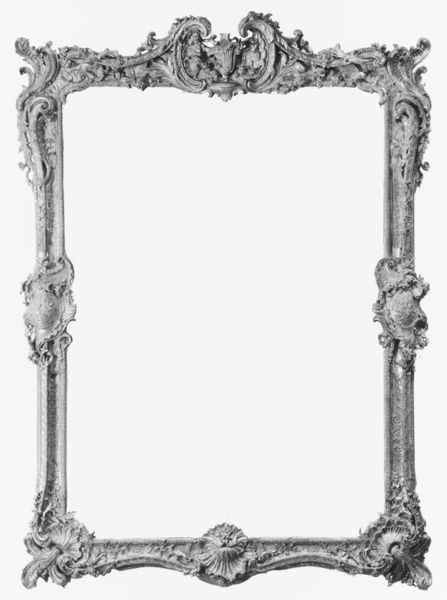
gold, glass, sculpture, architecture
#
neoclacissism
#
neoclassicism
#
sculpture
#
gold
#
traditional architecture
#
glass
#
classicism
#
sculpture
#
decorative-art
#
architecture
Dimensions: 170.2 × 71.2 × 5.7 cm (67 × 28 1/4 × 2 1/4 in.)
Copyright: Public Domain
Curator: Here we have "Looking Glass," a stunning example of decorative art made sometime between 1790 and 1810. Editor: The mirror immediately strikes me as quite elegant, almost imposing, with that proud eagle perched atop. It suggests wealth and power, a reflection of societal aspirations. Curator: Precisely. Observe how the anonymous artisan utilizes neoclassicism to convey authority. The rigid symmetry, the gilt finish, the classicizing details like the urns...they all speak to an era fascinated by order and the grandeur of antiquity. Semiotically, the eagle itself functions as an emblem of strength and elevated status. Editor: Yes, but it’s also interesting how these symbols played into a growing sense of national identity, particularly in the wake of the American Revolution. An object like this likely held complex political connotations tied to nationhood and emerging social hierarchies. Was this looking glass purely decorative, or could it be considered a symbol of burgeoning American ambition? Curator: An insightful question! While aesthetically neoclassical, we cannot ignore the decorative painting above the mirror. Do those motifs present images from America, and by presenting them on this status symbol, give agency to this symbolic birth? I also must question how functional such a looking glass actually is: its reflection muddied, even in an excellent state of preservation. Editor: Its utility is certainly less valuable now, although that patina on the glass itself has a unique history. Still, considering the architecture-inspired details within that landscape, and that golden eagle asserting itself, I can't help but view it within its era's political and cultural narratives. What stories of ambition, power, and perhaps even societal division, were reflected within its looking glass? Curator: Ultimately, I think this work encapsulates the neoclassical interest in harmony. From composition, to symbolism, "Looking Glass" serves to provide the most formal view, indeed. Editor: Right, and I think examining it through a socio-historical lens just enhances our understanding of those very formal choices. It's an intriguing dance between art and its times, isn’t it?
Comments
No comments
Be the first to comment and join the conversation on the ultimate creative platform.
